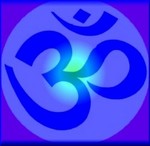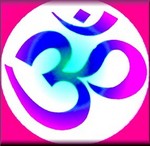My Images
Photo Gallery
The syllable Aum is first described as all-encompassing mystical entity in the Upanishads. Today, in all Hindu art and all over India and Nepal, 'Aum' can be seen virtually everywhere, a standard sign for Hinduism and its philosophy and mythology.
Uttering the monosyllable Aum, the eternal world of Brahman, One who departs leaving the body (at death), he attains the superior goal.
According to Hindu philosophy(see Mandukya Upanishad), the letter A represents creation, when all existence issued forth from Brahma's golden nucleus; the letter U refers to Vishnu the god of the middle who preserves this world by balancing Brahma on a lotus above himself, and the letter M symbolizes the final part of the cycle of existence, when Vishnu falls asleep and Shiva has to breathe in so that all existing things have to disintegrate and are reduced to their essence to him. More broadly, Aum is said to be the primordial sound that was present at the creation of the universe. It is said to be the original sound that contains all other sounds, all words, all languages and all mantras.
Goddess Kali & Lord Shiva
Kali is a feminine form of the Sanskrit word "kala," meaning "time". It also means "black". Kali has therefore been translated variously as "She who is time," "She who devours time," "She who is the Mother of time," "She who is black," and "She who is black time". Kali's association with blackness stands in contrast to her consort, Shiva, whose body is covered by the white ashes of the cremation ground (Sanskrit: 'maan') in which he meditates, and with which they are both associated, hence Kali's epithet 'maanâ.'
Vaishnava Dvaita philosophies teach that 'Aum' is an impersonal sound representation of Vishnu/Krishna while Hari Nama is the personal sound representation. For both Hindus and Buddhists this syllable is sacred and so laden with spiritual energy that it may only be pronounced with complete concentration.
Buddhists place om at the beginning of their Vidya-Sadaksari or mystical formulary in six syllables (viz., om mani padme hum) As a seed syllable (bija mantra), it is also considered holy in Esoteric Buddhism.With Buddhism's evolution and breaking away from Vedic/Hindu tradition, Aum and other symbology/cosmology/philosophies are shared with the Hindu tradition. This character often appeared as "" in Buddhist scripts in East Asia.
Thus ओं नमः (oṃ namaḥ) is a short form of the Navkar Mantra.
In Jainism, Aum is regarded to be a condensed form of reference to the five parameshthis. The Dravyasamgrah quotes a Prakrit line:
- ओम एकाक्षर पञ्चपरमेष्ठिनामादिपम् तत्कथमिति चेत "अरिहंता असरीरा आयरिया तह उवज्झाया मुणियां",
- oma ekākşara pañcaparameşţhitāmādipam tatkabhamiti ceta "arihatā asarirā āyariyā taha uvajjhāyā muņiyā"
- "Aum" one akshara, is made from the initials of the five parameshthis. It has been said: "Arihanta, Ashiri (i.e. siddha), Acharya, Upadhyaya, Munis(sadhus)"
Thus ओं नमः (oṃ namaḥ) is a short form of the Navkar Mantra.
Being Anjana's son, Hanuman is also called Anjaneya (pronounced Aanjančya), which literally means "arising from Anjana".
The Chandogya Upanishad states: om ity etad akṣaram udgītham upāsīta / om iti hy udgāyati / tasyopavyākhyānam "The udgitha ["the chanting", that is, the syllable om] is the best of all essences, the highest, deserving the highest place, the eighth."
The Katha Upanishad has:"The goal, which all Vedas declare, which all austerities aim at, and which humans desire when they live a life of continence, I will tell you briefly it is Aum" "The one syllable [evākṣara, viz. Aum] is indeed Brahma. This one syllable is the highest. Whosoever knows this one syllable obtains all that he desires. "This is the best support; this is the highest support. Whosoever knows this support is adored in the world of Brahma."
The Yoga Sutras of Patanjali states in verse :"tasya vacakah pranavah" which translates as, "God's voice is Aum."
Ek Onkar (also ੴ, ਇਕ ਓਅੰਕਾਰ, Ik Onkar) from Sanskrit ekomkāra "one omkāra" per the special sandhi rule treated above, is a central symbol of the unity of God in Sikhism, and is commonly found on Gurdwaras. Guru Nanak, the founder of the Sikh religion, used the word Onkar to state the concept of a monotheistic God . This is further clarified by Guru Nanak in his composition (Guru Nanak, Guru Granth Sahib, 929).:oua(n)kaar brehamaa outhapath "From Ongkaar, the One Universal Creator God, Brahma was created." stating that Onkar is that which created Brahma and therefore preceded Brahma.Ek Onkar is the start of the Sikh Mool Mantra - the root basis of all Sikh sacred thought, and the first phrase of the Sikh Guru embodied in scripture, the Guru Granth Sahib.
"tasya vacakah pranavah" which translates as, "God's voice is Aum."
om ity etad akṣaram udgītham upāsīta / om iti hy udgāyati / tasyopavyākhyānam
"The udgitha ("the chanting"), that is, the syllable om] is the best of all essences, the highest, deserving the highest place, the eighth."
"The one syllable [evākṣara, viz. Aum] is indeed Brahma. This one syllable is the highest. Whosoever knows this one syllable obtains all that he desires.
The syllable is mentioned in all the Upanishads, specially elaborated upon in the Taittiriya, Chandogya and Mundaka Upanishads. set forth as the object of profound religious meditation, the highest spiritual efficacy being attributed not only to the whole word but also to the three sounds a (a-kāra), u (u-kāra), m (ma-kāra), of which it consists.
Om & Hanuman
Hanuman (Sanskrit: हनुमत् Hanumat; nominative singular हनुमान् Hanumān), known also as 'Anjaneya', is one of the most important personalities in the Indian epic, the Ramayana. He is a vanara who aided Lord Rama (an avatar of Vishnu) in rescuing his wife, Sita from the Rakshasa king Ravana.
Hanuman & Aum
Sri Panchamukha Anjaneya Swami was the main deity of Sri Raghavendra Swami. The place where he meditated on this five-faced form of Hanuman is now known as Panchamukhi, wherein a temple for him has been built. There is also a shrine for Panchamukha Anjaneya Swami at Kumbakonam in Tamil Nadu, India. A 40 feet tall monolithic green granite murti of Sri Panchamukha Hanuman has been installed in Thiruvallur, also in Tamil Nadu. This place was known as Rudravanam in olden times when many saints and seers had blessed this place with their presence. The Panchamukha Hanuman Ashram itself was established by a saint called Venkatesa Battar.
Hanuman symbolises the pinnacle of bhakti, and Hindus consider him to be the eleventh Rudra avatar of Lord Shiva.Hanuman is the epitome of wisdom, brahmacharya, bhakti (devotion/faith), valour, righteousness and strength .
In the Hindu faith, Hanuman and Vinayaka are two aspects of God not afflicted by Shani. There is also a belief that all the planets are under the control of Hanuman's tail. Whoever worships Hanuman is granted fortitude and strength.There are numerous temples for Hanuman, and his images are usually installed at all temples where images of avataras of Vishnu are installed. Hanuman temples can be found in many places for the reason that the area and the surroundings are free from 'Rakhshasas' and 'evils'. This was a presentational 'Varam' to him by Rama and Sita. Hanuman idols are found on mountain roads because it is believed that he protects people from accidents.
Ek Onkar (also ੴ, ਇਕ ਓਅੰਕਾਰ, Ik Onkar) from Sanskrit ekomkāra "one omkāra" per the special sandhi rule treated above, is a central symbol of the unity of God in Sikhism, and is commonly found on Gurdwaras.
Aum known as the Beeja Mantra of Hinduism & other Sister Religions such as Buddhism & Jainism . ( It is also the Mool Mantra to the Sikhs ) .
Guru Nanak : Oua(n)kaar brehamaa outhapath ."From Ongkaar, the One Universal Creator God, Brahma was created."
Ek Omkar , according to Sikhism ( Sikhism : Religion originated in Punjab , India ) : The word 'O-ankaar' denotes that God manifests Himself ceaselessly throughout His creation in diverse forms, features and colours, and in this way becomes knowable to us. But, in spite of manifesting in such diverse forms, God remains One; He is immanent in His creation, while being at the same time transcendent. This God is at once one and many, implying unity in diversity. Kapur Singh suggests Oan = Transcedent, -kar = Immanent. The Mandukopanishad defines the word as: "That which was, is, will be, is all Onkar. And that which triple transcends is Onkar too."
Mool Mantra of Sikhism :Ika ōaṅkāra sati nāmu karatā purakhu nirabha'u niravairu akāla mūrati ajūnī saibhaṃ gura prasādi
Simplified transliteration: Ik ōaṅkār sat nām kartā purkh nirbha'u nirvair akāl mūrat ajūnī saibhaṃ gur prasād ||
One Universal Creator God, The Name Is Truth, Creative Being Personified, No Fear, No Hatred, Image Of Undying, Beyond the Cycle of Birth and Death, Self-Existent, By Guru's Grace.
According to Advaita Philosophy : Aum is the signifier of the ultimate truth that all is one. Examples of Three into One:
- Creation (Brahma)- Preservation (Vishnu)- Destruction (Shiva) into Brahman
- Waking- Dreaming- Dreamless Sleep into Turiya (transcendental fourth state of consciousness)
- Rajas (activity, heat, fire) - Tamas (dullness, ignorance, darkness) - Sattva (purity, light, serenity/shanti) into Brahman
- Body, Speech and Mind into Oneness
Aum is said to be the primordial sound that was present at the creation of the universe. It is said to be the original sound that contains all other sounds, all words, all languages and all mantras.
The Yoga Sutras of Patanjali states in verse:
"tasya vacakah pranavah" which translates as, "God's voice is Aum."
In the following sutra it emphasizes, "The repetition of Om should be made with an understanding of its meaning".
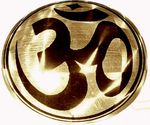
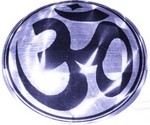
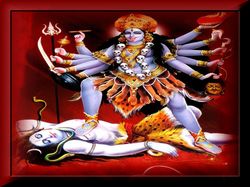
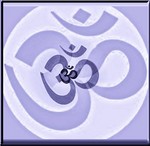
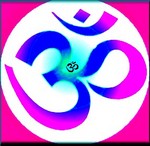
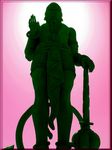
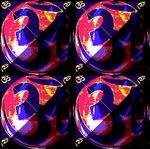
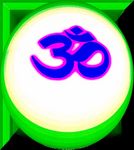
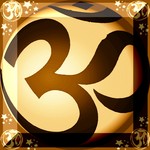
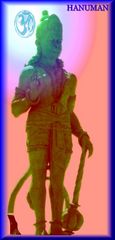
_-908_112x150.jpg)
_-dd_112x150.jpg)
